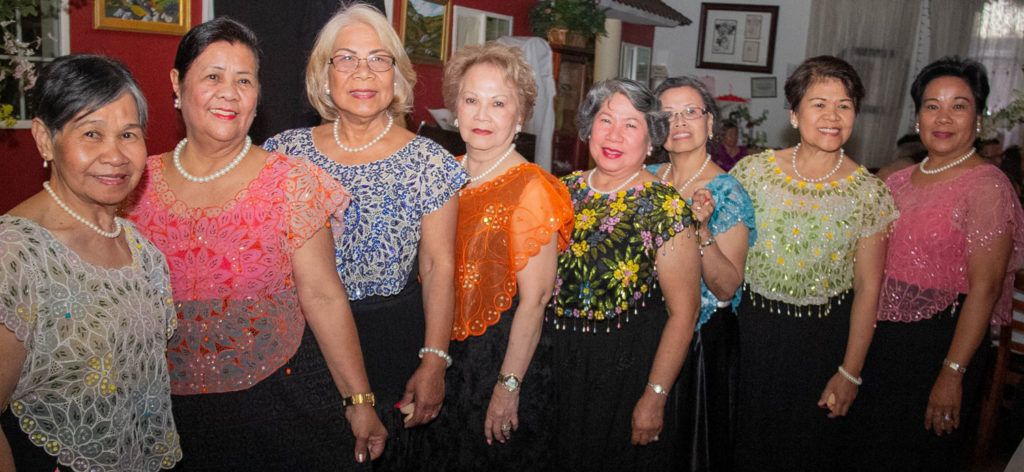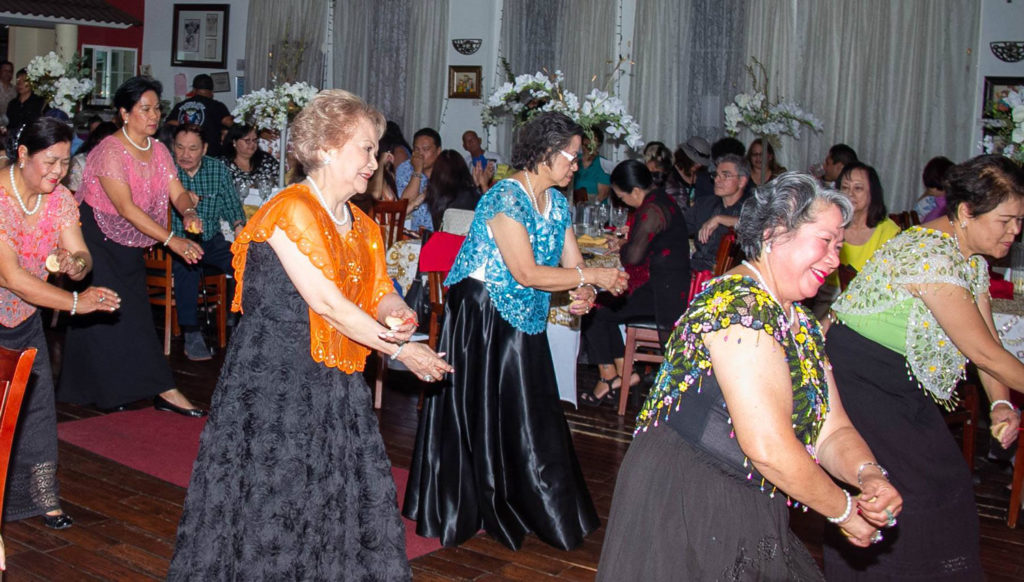By Mariel Toni Jimenez. This article originally appeared in Positively Filipino magazine.

Legionarios de Trabajo
My mother looked forward to Sunday because it was a day that she and her friends went to the dance hall in Daly City, located in the park off Acton Street at the Top of the Hill.
If you look back at archived books and film clips on the arrival of Filipinos in America, you will find that the means of socializing were the dances; playing pool in the pool halls; and celebrating birthdays, weddings, and job promotions with a vast amount of Filipino food: lechon; adobo; lumpia; kare-kare; pinakbet; dinuguan; and, of course, pancit.
Today, one can still see the same patterns of socializing. In South San Francisco’s Buri-Buri Park there are weekly dances for senior citizens. Sponsored by a group of elderly Filipinos from South San Francisco, Buri-Buri Filipino Senior Citizens Association, this tradition of camaraderie and socializing has been around since the 1980’s.
Filipinos love dancing and that’s a fact.
At Filipino events, you see young and old dancing. Lola and Tita are proud to show their friends that their “apo” grandchild can dance. “Come here, show your Tita what you learned in class!” is often an order from elders.
I recently had the opportunity to attend the first Philippine Independence Dinner and Awards at Red Orchids Restaurant. Mangahas emceed the program, and I eagerly watched a group of elderly Filipinos dance. They are known as Legionarios de Trabajo (Legionnaires of Labor) a mutual benefit organization.
Originating from the Philippines, Legionarios was established in America in 1924 and incorporated in California with the Worshipful Mason Lodge No. 459 in San Francisco. The organization was especially important for working men who were disconnected from family and the familiarity of home. Politically, it was committed to improving relations between the U.S. and the Philippines and achieving Philippine Independence. Its headquarters are in Stockton, California, where many Filipinos first settled in America.
Members of the dance group are between the ages of 60 to 80 years old. I spoke to a manang (a Filipino word derived from the Spanish word hermana, meaning “sister”) and asked her how long she had been performing Filipino folk dances. She replied, “I have been dancing for over 35 years, and I do it to stay young.”
The health benefits of dancing for seniors is universal. It improves cardiovascular health, which decreases the chances of developing heart disease. A review of multiple studies on dancing and aging found that any style of dance can help maintain or even improve muscle strength, balance, endurance, and other forms of physical health in older adults.

Members of the Legionarios perform during the first Philippine Independence Dinner and Awards at Red Orchids Restaurant.
Psychology researchers at the University Oxford published a study in the journal Evolution and Human Behavior. They brought volunteers into a lab and taught them different dance moves. They then placed volunteers in groups of four on the dance floor and put headphones on them so they could hear music. Some of them were taught the same dance moves, and others were taught different dance moves. The researchers measured their pain threshold by squeezing their arms, before and after the volunteers danced. They found that there was a huge difference in pain perception before and after they danced together. In short, people engaged in social or group dancing experience less pain, a particular benefit for seniors who often deal with increasing physical discomfort.
Let’s not forget the social and mental benefits of dancing. Keeping one physically strong isn’t the only benefit dancing provides. It can improve social and emotional health.
As I interviewed more manangs of the group, all mostly over 60 years old, on the impact that Philippine folk dancing hobby on their life, they enthusiastically agreed that dancing helped them become more involved in their communities, encouraged them to participate in charitable and group activities, and provided a space for self-expression and personal development.
“Life without Philippine folk dancing would be dreadful to imagine,” said one manang, “since this is our weekly form of activity and it provides us a purpose to work towards a common goal, which is to maintain our Filipino culture and heritage through dance.”
How about seniors with poor mental health? Studies have found that social dancing can make a difference. Dancing improves positive feelings, behavior, and communication among patients with dementia, depending on how and what physical motions they are doing.
Research confirms that participating in dance can improve your sense of well-being, keeping you connected to your community and interested in everyday life as you age.
The opinions expressed in this article are those of the author and do not necessarily reflect those of the Diverse Elders Coalition.

